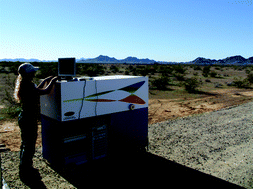Test of a stand-off laser-induced breakdown spectroscopy sensor for the detection of explosive residues on solid surfaces
Abstract
The detection and characterization of energetic materials at distances up to 45 m using stand-off laser induced breakdown


 Please wait while we load your content...
Please wait while we load your content...